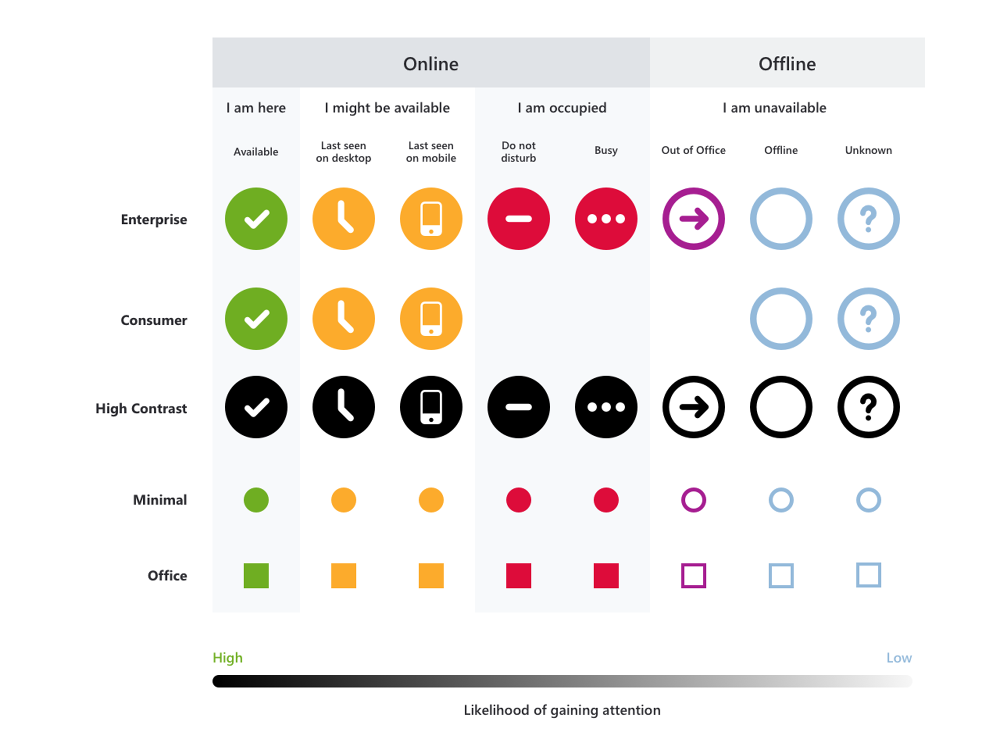Aligning consumer and enterprise needs
I co-developed a unified presence model to align the Skype consumer products and the legacy Lync clients into one cohesive system across both brands.
One of the core principals was to understand the intent of the user from inferred behaviours that could be determined using sensors, when they do not explicitly set a presence - for example, if a mobile device reports that it's connected to a car.

The second and perhaps most crucial part, was to ensure that the visual representation of presence states was immediate and glanceable, even for those users that may have visual impairments.

It was hugely important that the system was accessible and adaptable across different Microsoft properties, as well as referencing legacy presence models to ease the transition.
Signalling
Particular time and effort was spent understanding the granular requirements of enterprise users and the unique ways they adapt presence for their own specific industries. In short - if I had a real life human assistant, how would they share the likelihood of getting my attention?
I worked with stakeholders in London and Redmond, and spent time on key customer sites in such as Emirates in Dubai and AB Volvo in Gothenburg to really understand the real-life usage, particularly in enterprise scenarios.